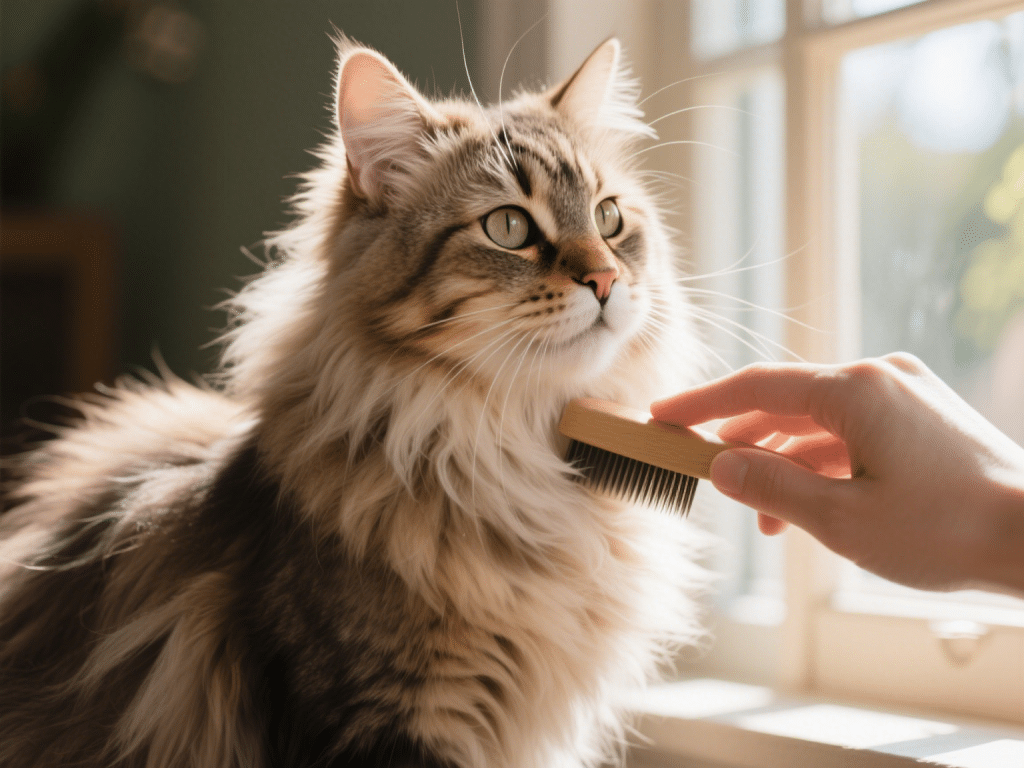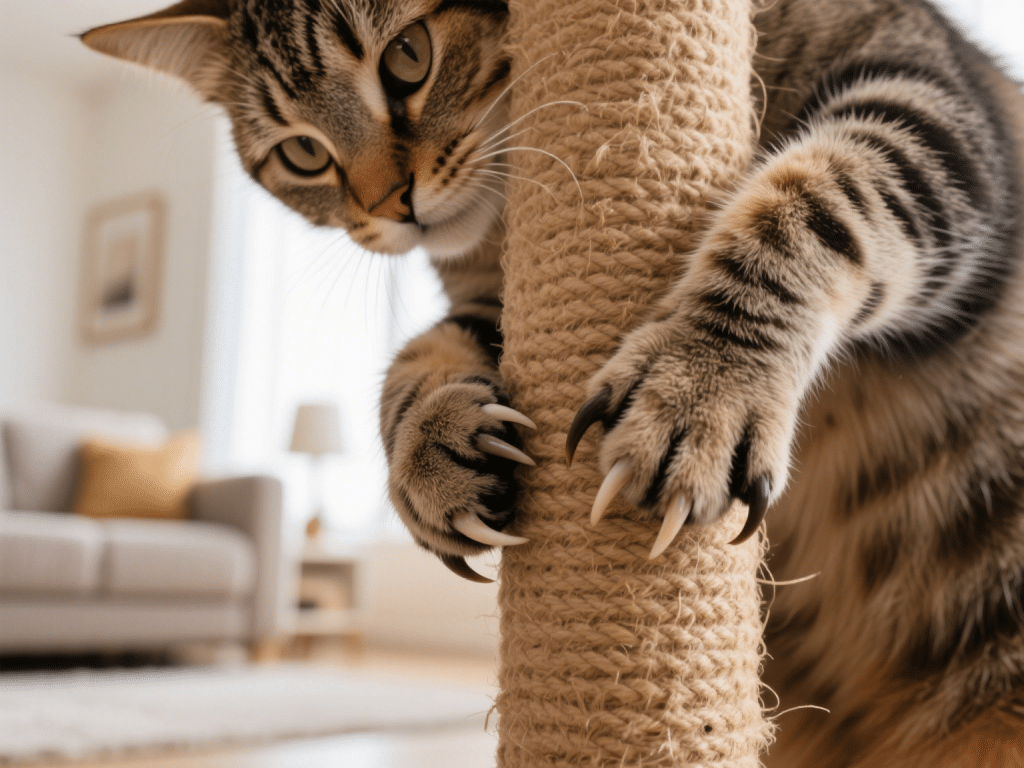
Gentle Grooming Essentials: Keeping Your Cat’s Coat Healthy and Shiny
As a professional feline groomer and veterinary nurse for over a decade, I’ve learned th...

From shredded couches to torn wallpaper, scratching can feel like a battle you’re destined to lose. Yet, in my twelve years as a feline enrichment specialist, I’ve seen how understanding—and fulfilling—your cat’s scratching needs transforms conflict into contentment. Scratching isn’t spiteful; it’s an instinctive behavior essential for claw health, territory marking, and muscle tone. This guide unpacks the “why” of scratching and provides actionable solutions to protect your home while respecting your cat’s natural drives.
Claw Maintenance: Removing old nail sheaths keeps claws sharp and functional.
Territorial Marking: Cats have scent glands in their paws; scratching deposits pheromones to communicate territory boundaries.
Muscle Stretching: Vertical and horizontal scratching stretches back, shoulder, and neck muscles.
Vertical Scratching Posts: Sturdy, at least as tall as your cat when fully stretched. Sisal rope or corrugated cardboard surfaces are preferred.
Horizontal Scratchers: Corrugated cardboard pads on the floor appeal to cats who favor ground-level scratching.
Inclined Panels: Ideal for seniors with limited mobility who prefer a gentle angle.
Key Locations: Near sleeping areas (where cats wake and stretch), entryways (territorial boundaries), and favorite window perches.
Enticing with Catnip or Pheromone Sprays: Lightly dust scratching posts with catnip or use Feliway On‑Spray to draw your cat’s attention.
Positive Reinforcement: Praise and treat when your cat uses the designated scratcher; never punish for scratching.
Furniture Covers and Deterrents: Use slipcovers on sofas or apply double‑sided tape to deter scratching on prohibited surfaces.
Redirect Immediately: If you catch your cat in the act, gently pick them up and place at the correct scratcher.
Rotate Texture Options: Some cats prefer sisal rope, others cardboard—offer both to find what resonates.
Excessive or frantic scratching may signal stress or boredom. Increase interactive play, provide high vantage points, and ensure environmental stability—especially in multi‑cat homes where competition can elevate stress levels.
“Scratching is deeply tied to a cat’s sense of security,” explains animal behaviorist Laura Chen. “Meeting scratching needs often resolves a host of other behavioral issues.”
By honoring your cat’s scratching instincts with appropriate posts, strategic placement, and positive reinforcement, you’ll safeguard your furniture and foster a happier feline. Embrace scratching not as a nuisance but as an opportunity for enrichment and communication.

As a professional feline groomer and veterinary nurse for over a decade, I’ve learned th...

Designing an indoor aviary isn’t just about aesthetics—it’s about replicating natura...

Parasites pose a hidden threat to our tiniest canine companions. Drawing on my background ...

As a veterinary nutrition specialist and long-time dog enthusiast, I’ve tested dozens of...

IntroductionBringing a second pet into your household can enrich both your life and that o...

IntroductionWelcoming a kitten into your home is a joyful experience, but it also carries ...
Comments on "Cat Scratching Demystified: Why Cats Scratch and How to Protect Your Furniture" :